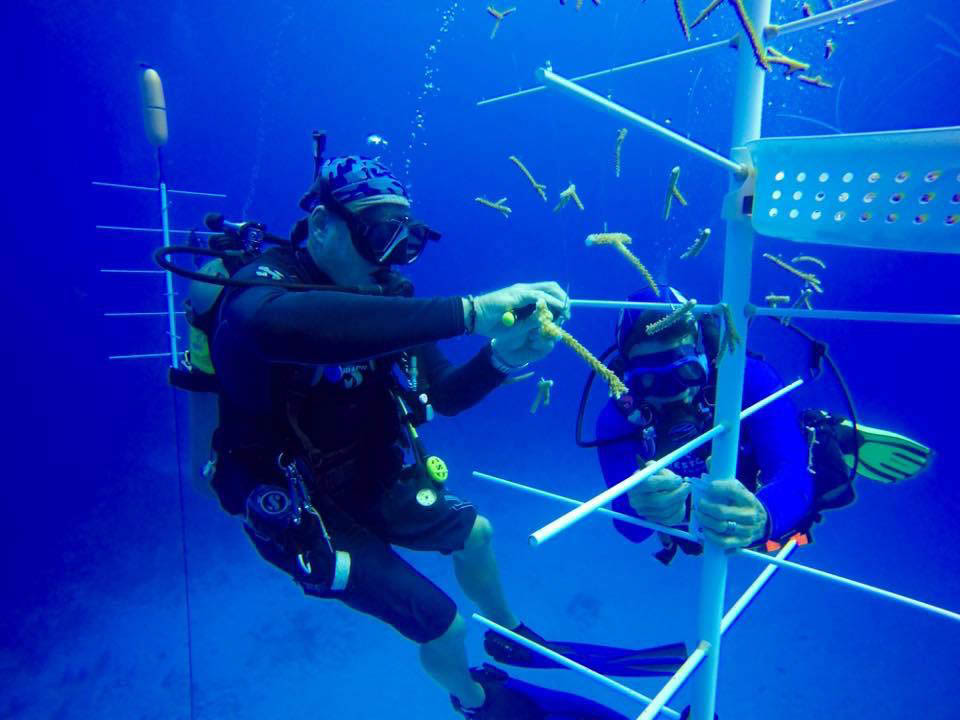Weeks after being set up, coral gardens showing great signs of growth; dive “gardeners” excited about progress
After only a few short weeks, hundreds of coral fragments hanging from “trees” made of PVC pipe in the shallow waters of Grand Cayman are showing healthy signs of life and attracting fish. Ocean Frontiers, Sunset House and Divetech are gardening coral that will be used to replenish Cayman’s reefs. The Cayman Islands Department of Environment granted the operators permits to set up the coral nurseries and is overseeing their individual programs.
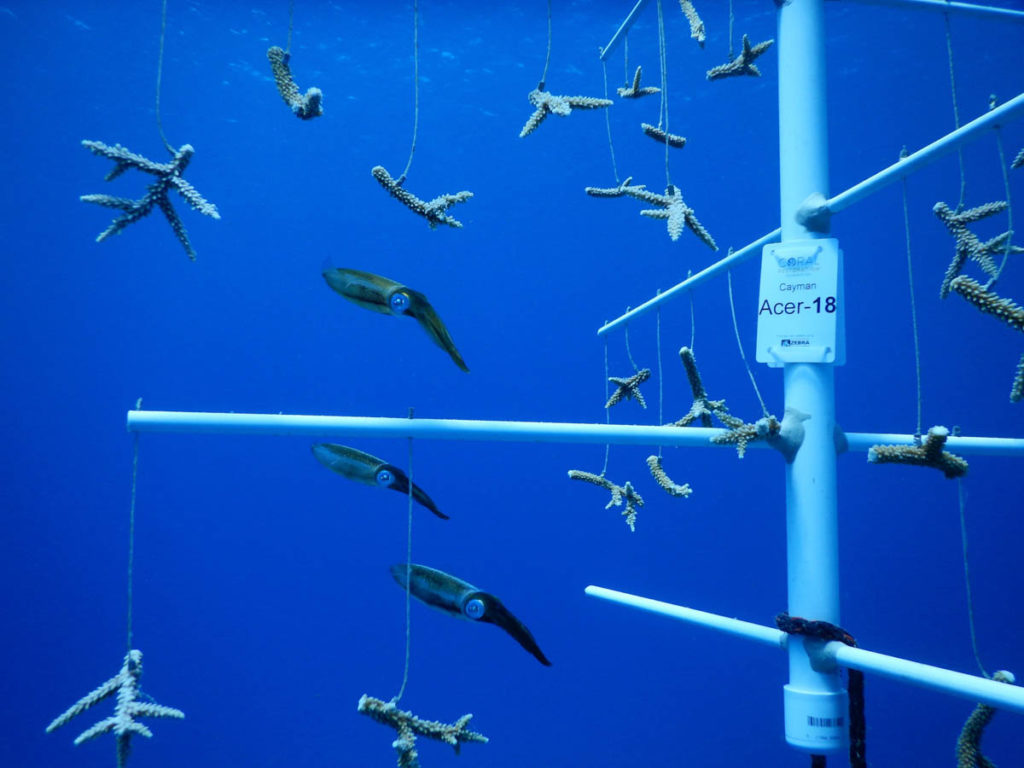
“So far everything looks great! There has been zero mortality from the collected coral,” says Lois Hatcher who is managing the nursery for Ocean Frontiers. “We are doing weekly maintenance on the site and setting up a report for the Department of Environment. The fragments are being monitored for disease, photographed and measured. They already show visible growth after just a few weeks.”
The coral trees were set up in late April with the help of Sea of Change Foundation, an ocean conservation non-profit that donated money and materials to construct the PVC trees, plus guidance and manpower. Experts from the Coral Restoration Foundation were brought in to help install the trees and train the dive operators in how to manage the nurseries.
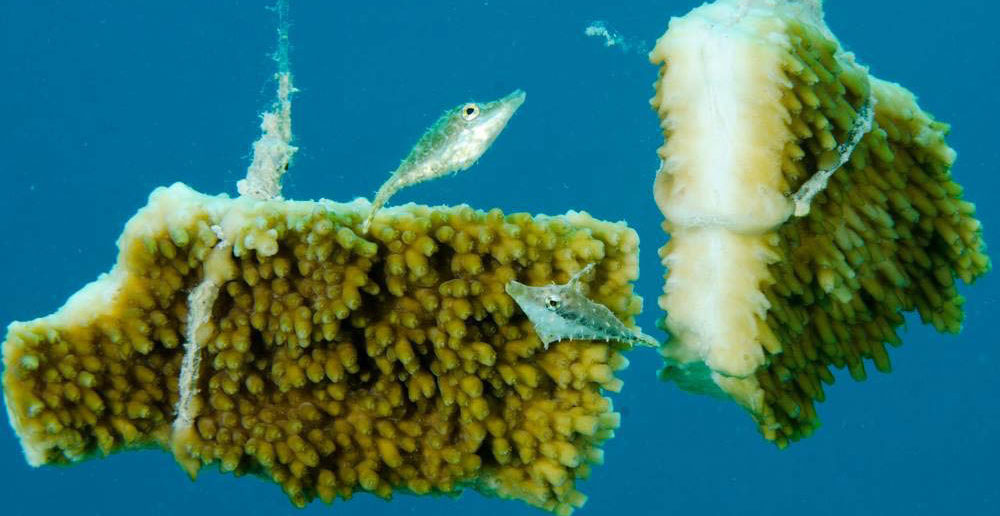
“Every year the Foundation picks a project that we believe will make a difference in saving our seas, and this year we picked Cayman’s coral nursery program,” said board member Jerry Beaty. “We’ve seen this method succeed in other places and because Cayman is such a prime dive destination, we want to do what we can to keep it that way.”
Each coral tree, which can hold about 100 coral fragments, is anchored to the sea bottom with rope and can float with the currents, even during storms and hurricanes. The coral fragments feed from the nutrient-rich currents and they grow. Cayman’s nurseries contain fast-growing Staghorn Corals. Nursery tenders clean and maintain the coral trees to find the strongest corals which will then be used to “seed” local reefs.
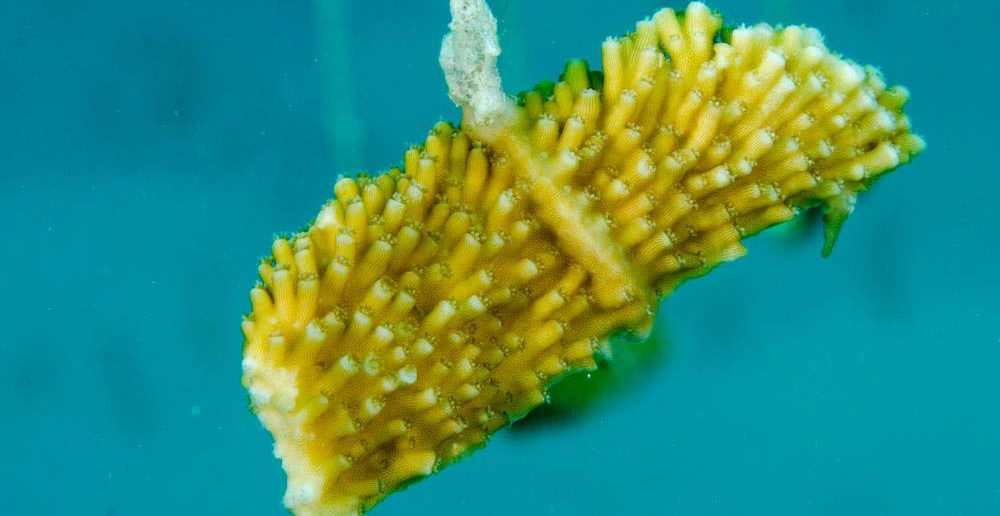
“I was out cleaning the nursery the other day and everything looks very healthy and all of the fragments have already grown over the fishing line that is attaching them to the trees. Very exciting!” says Jo Mikutowicz, Divetech.
“The staghorn has already grown between .5 cm to 2.5 cm based on the 5 cm baseline fragments that were hung. On the Elkhorn it’s great to see the mono that was wrapped around the fragment as they have overgrown already,” said Lois Hatcher.
The Sunset House coral nursery has attracted a small school of curious squid.
“The nursery is doing very well, and there’s also a lot of interest from guests,” says General Manager Keith Sahm. “The trees are strategically placed and depth changeable to accommodate the nursery, and keep it safe from a late season Nor’wester.”
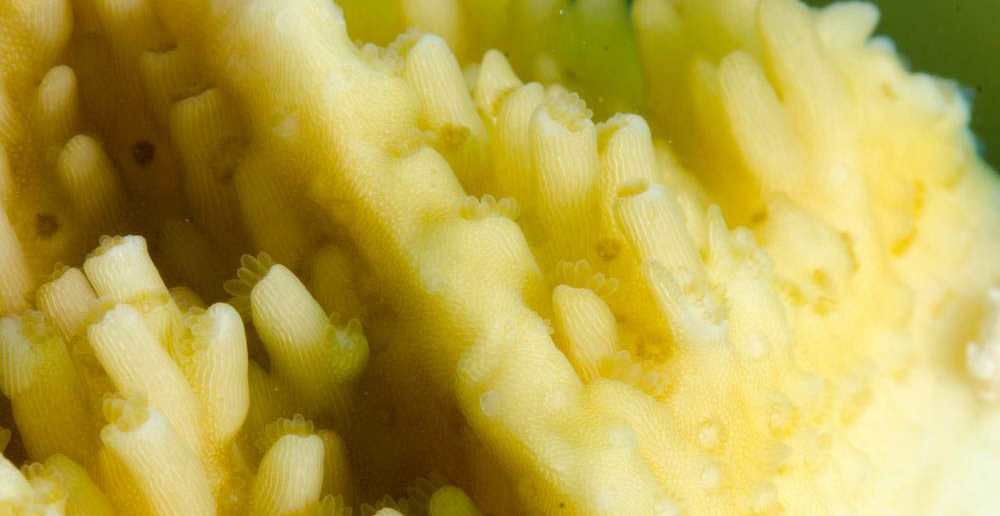
Dive operators, staunch advocates for protection of the marine environment, have always enforced conservation measures to reduce the stress on Cayman’s reefs from divers. The chance now to be directly involved in growing coral to seed and boost the reefs is exciting and fills them with purpose.
“It requires a lot of work on Divetech’s part to maintain the coral trees weekly, to keep algae off of them and keep any predators (snails and fire worms) off the coral,” explains Jo Mikutowicz. “We are very dedicated to this nursery program being a success and will put in all the work that is required to maintain them.”
With coral reefs threatened worldwide from overfishing, rising water temperatures, ocean acidification, pollution and more, Cayman’s operators are excited about the good things that will result from their new coral nurseries.
“It sometimes seems like there is a lot working against coral to stay alive and be healthy these days so it’s nice to finally be able to be proactive in reversing the damage to the reefs and to be able to create new reefs,” said Mikutowicz.
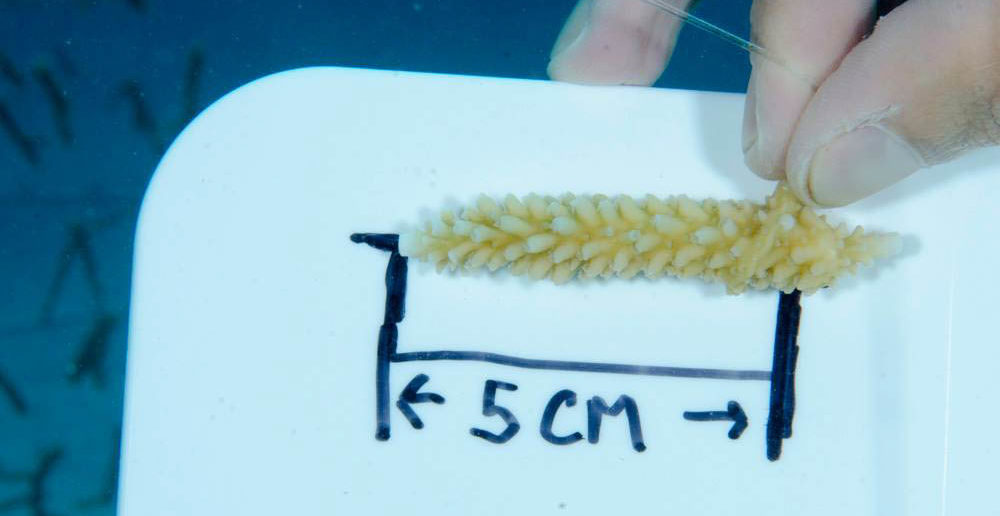
“It will be very successful, there is no reason for it not to be,” says a confident Lois Hatcher, who has co-managed the successful coral restoration project in George Town Harbour started a year ago to repair reef damage from a ship anchor.
“At the Carnival Magic site we have out planted already and those are doing well. Cayman reefs will never be the same as they were 100 years ago or even 20 years ago but we can slow down and maintain the loss which means there is hope. As long as there is hope we need to continue,” she said.



